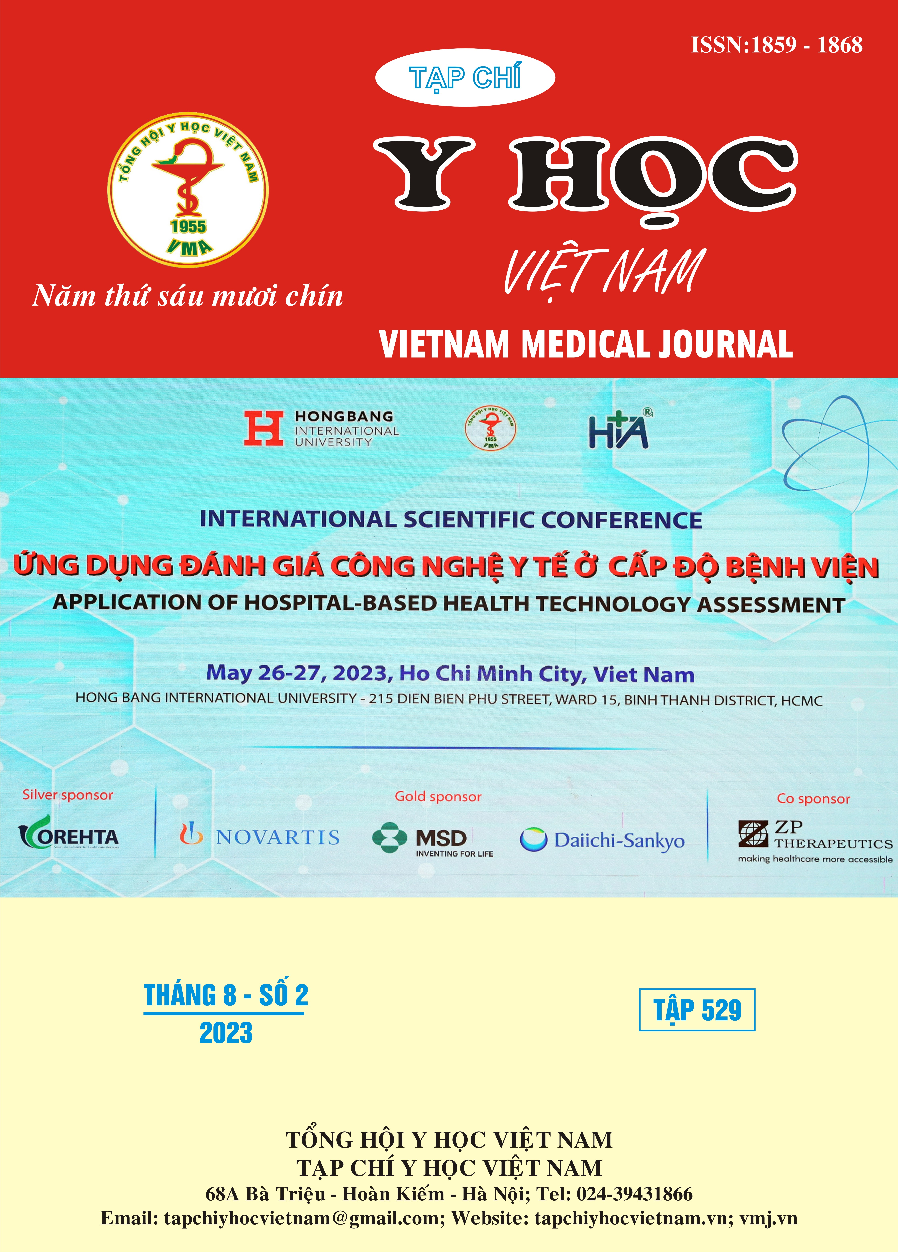OVERVIEW: TREATMENT METHODS FOR VOCAL FOLD NODULES
Main Article Content
Abstract
Objectives: Describe the characteristics of the research on the treatment of Vocal cord nodules and the results of treatment. Subjects and methods: Articles, studies, lectures, and textbooks in 3 databases PubMed, Cochrane, and ScienceDirect met the research criteria. Result: Found 750 documents. After analysis, 16 articles were included in the study: 56.3% (9 articles) mentioned speech therapy, and
articles mention laryngeal microsurgery treatment; 6.3% (1) articles combine laryngeal microsurgery and steroid injections; and 12.5% (2) articles mention corticosteroid therapy alone. Some characteristics of research studies: retrospectiVe study design 50% (8), prospectiVe 37.2% (6), clinical trials 12, 5% (2), and the sample size of the studies was less than 50 people (87.5%), female (96.1%). The aVerage age of the participants was 30–40 years old (66.8%). Treatment results: laryngoscopy has the effect of improVing 70– 90% of the size of the larynx; laryngeal microsurgery should be used after treatment with laryngopharyngeal therapy has no results; the combination of laryngoscopy with other methods such as laryngoscopy; Steroid injections increase the effectiVeness of treatment and reduce the time to relapse. Injectable steroids alone should be used in patients who are unable to achieVe amenorrhea but do not wish to undergo surgery. Steroid injections increase the effectiVeness of treatment and reduce the time to relapse. Injectable steroids alone should be used in patients who are unable to achieVe amenorrhea but do not wish to undergo surgery. Steroid injections increase the effectiVeness of treatment and reduce the time to relapse. Injectable steroids alone should be used in patients who are unable to achieVe amenorrhea but do not wish to undergo surgery.
Article Details
Keywords
Vocal fold nodules, phonomicrosurgery, Voice therapy, steroid injection
References
2. Béquignon E, Bach C, Fugain C, et al. Long- term results of surgical treatment of Vocal fold nodules. The Laryngoscope. 2013;123(8):1926- 1930. doi:10.1002/lary.23768
3. Pannbacker M. Treatment of Vocal nodules: options and outcomes. American Journal of Speech-Language Pathology. 1999;8(3):209-217.
4. Chernobelsky SI. The treatment and results of Voice therapy amongst professional classical singers with Vocal fold nodules. Logoped Phoniatr
Vocol. 2007;32(4):178-184. doi:10.1080/14015430600852043
5. Alegria R, Vaz Freitas S, Manso MC. EffectiVeness of Voice therapy in patients with Vocal fold nodules: a systematic search and narratiVe reView. Eur Arch Otorhinolaryngol.
2020;277(11):2951-2966. doi:10.1007/s00405-
020-06059-8
6. Anderson T, Sataloff RT. The Power of Voice Therapy. Ear Nose Throat J. 2002;81(7):433-434. doi:10.1177/014556130208100704


